Stephen Hawking, who died last month at 76, turned the world of popular science writing upside down with the publication of “A Brief History of Time” in 1988. The book was a surprise best-seller, spending five years on the Sunday Times list; it has sold millions of copies and has been translated into more than 30 languages. Not bad for a work that delves into such heady subjects as singularities, superstrings, and imaginary time.
Since its publication, many more physicists, scholars, and journalists have entered the market with their own offerings. So if you’ve been flipping back through your copy of “A Brief History of Time” and craving more mind-bending musings on space and time, here are 10 books that make worthy sequels.
The Black Hole War: My Battle With Stephen Hawking to Make the World Safe for Quantum Mechanics, by Leonard Susskind (2008)
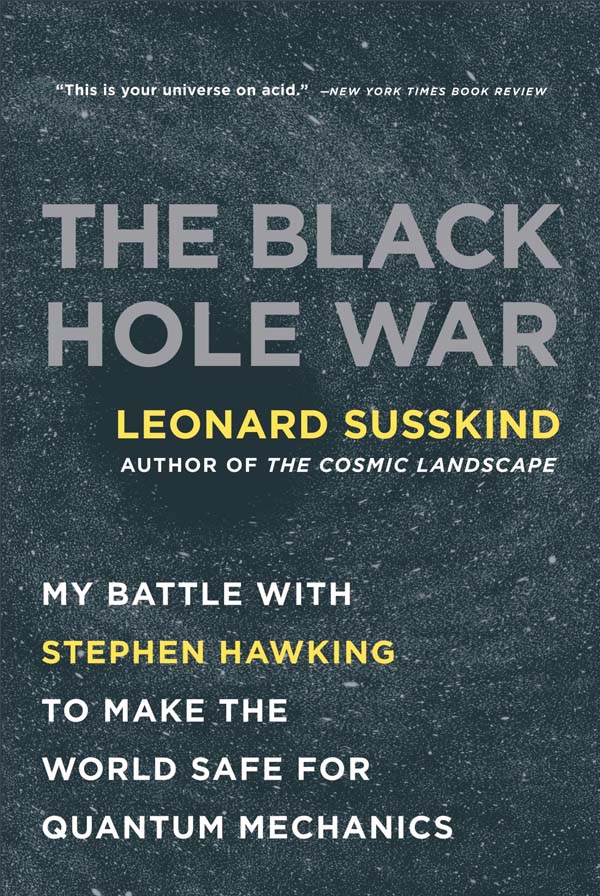
The rightful heir to “A Brief History of Time,” this book picks up where Hawking’s left off: at the edge of a black hole. Hawking’s discovery that black holes radiate their mass away, eventually disappearing from the universe, left physicists agonizing over a deceptively innocent question: What happens to the information about everything that fell in? If it vanishes into thin air, that violates quantum mechanics. If it escapes, that violates relativity. For years, Hawking stubbornly insisted that information had to be lost in black holes. Susskind, himself a physicist, put his money on its somehow sticking around. “The Black Hole War” chronicles the decadeslong battle between these intellectual giants, in the process explaining some of the deepest ideas in theoretical physics. Before inventing string theory, Susskind worked as a plumber in the Bronx, which perhaps explains the rare combination of soaring genius and down-to-earth cool that pervades his prose. Today the black-hole information-loss paradox remains unresolved — but if you want to get caught up on the profound havoc that Hawking’s brilliant discovery wrought, this is the book to read. – AG
The Fabric of the Cosmos: Space, Time, and the Texture of Reality, by Brian Greene (2003)
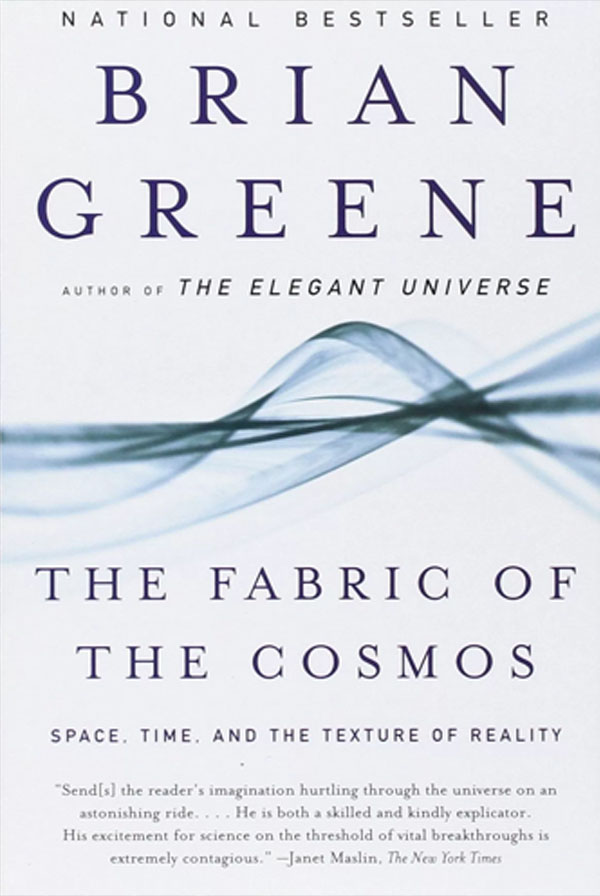
Space and time are at once intimately familiar and frustratingly elusive. We move freely through space, while time seems to carry us forward, never backward. Where does this asymmetry come from? Einstein did away with Newton’s absolute time and absolute space — but if space isn’t an actual thing, then where does inertia come from? These are deep questions that physicists are still struggling to solve. While we don’t yet have all the answers, there is no better guide to these heady problems than the physicist Brian Greene. His earlier book “The Elegant Universe” carries Hawking’s story forward, examining the prospects for a unified theory of physics, with an emphasis on string theory. In “The Fabric of the Cosmos,” Greene goes even further, asking us to look at the structure of space and time themselves. – DF
Black Hole: How an Idea Abandoned by Newtonians, Hated by Einstein, and Gambled On by Hawking Became Loved, by Marcia Bartusiak (2015)
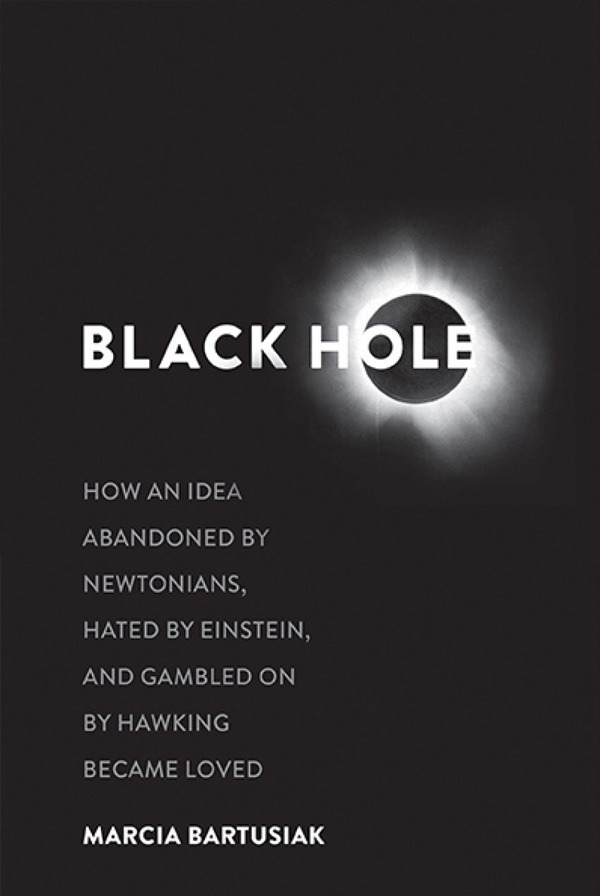
Hawking’s book has two chapters devoted to black holes, surely the most enigmatic structures to be found in our universe. But for anyone interested in the backstory – the tale of how these bizarre objects came to be thought of in the first place, and why we think they’re actually out there — this book is a great place to start. Bartusiak, a veteran science journalist and author, gives a succinct, lucid history of humankind’s attempt to make sense of gravity, including the centurylong quest to figure out what Einstein’s equations actually tell us about the cosmos and the objects within it. It was the late American physicist John Wheeler who coined the term “black hole” in 1967; as Bartusiak explains, it took little time to percolate through popular culture. But the idea of a black hole — a region of space-time effectively cut off from the rest of the universe — was controversial from Day 1. Of particular concern is that Einstein’s theory predicts the formation of a singularity at the center of a black hole, a spot where matter is infinitely squished. Bartusiak quotes Wheeler: “A prediction that is infinity is not a prediction. Something has gone wrong.” Today, physicists struggle to understand what, exactly, went wrong — and Bartusiak explains very clearly why it matters. — DF
From Eternity to Here: The Quest for the Ultimate Theory of Time, by Sean Carroll (2010)
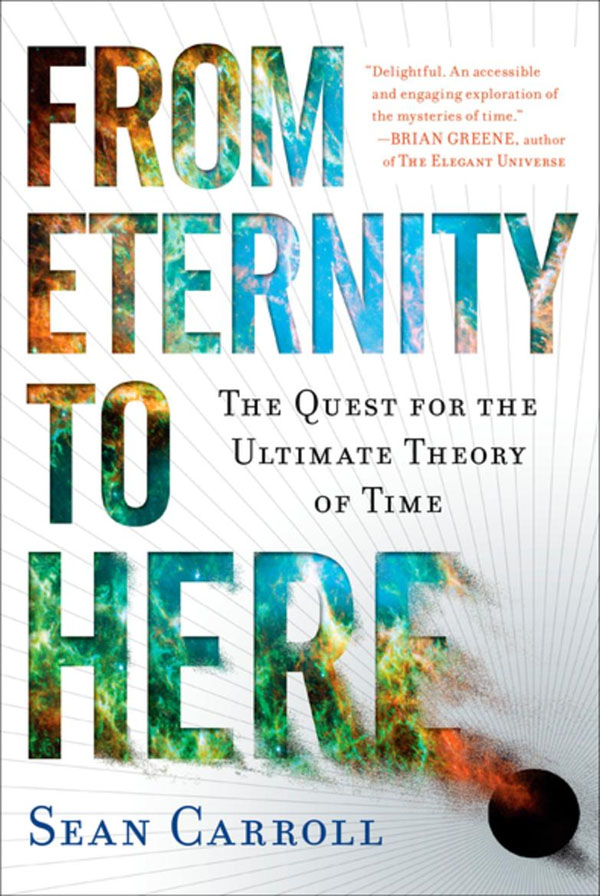
Why do we remember the past and not the future? Why does milk dissolve into coffee but never unmix? In short, why is there an arrow of time? That’s the mystery that the physicist Sean Carroll sets out to solve in “From Eternity to Here,” a sweeping, comprehensive, and engaging look at the universe’s weirdest dimension. Carroll writes with the same blend of authority and ease that made Hawking’s book so likable, and, like Hawking, doesn’t gloss over difficult concepts. From wormhole time machines to brains that spontaneously pop into existence, Carroll guides us through the pitfalls and paradoxes that plague any attempt to explain why, when all the laws of physics work the same way forward as backward, words like “before” and “after” should mean anything at all. What makes this book is exceptional, though, is that Carroll doesn’t simply explain different topics — he also reveals the deep connections among them. Whether he solves time’s mystery is up for debate, but he does something even better, really, by leaving us with an understanding of how the universe, multiverse, particle physics, quantum mechanics, information, complexity, life, and time are all pieces of the same beautiful puzzle. — AG
The Fabric of Reality: A Leading Scientist Interweaves Evolution, Theoretical Physics, and Computer Science to Offer a New Understanding of Reality, by David Deutsch (1997)
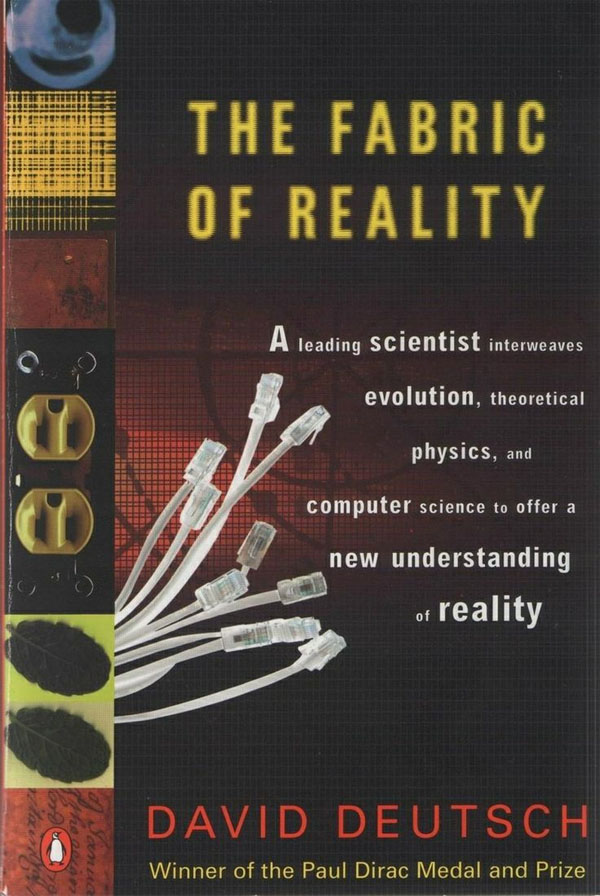
“We shall see that there is no such thing as the flow of time,” the physicist David Deutsch writes in this wildly provocative book. We say that we “feel” time’s passage, but this is illusory, he argues. Even our memories are merely records of previous arrangements of the universe. A few pages later, Deutsch connects these ideas to his argument in favor of a “multiverse.” There’s more: Deutsch is striving for a grand synthesis of knowledge, in which these ideas, along with Alan Turing’s theory of computation and Darwin’s theory of evolution, play a central role. Interestingly, Deutsch sees himself as a conservative thinker; he is not putting forward any new theories about the universe — rather, he’s urging us to take the well-established theories we already have and follow them wherever they may lead. All he asks is that we take their conclusions seriously, no matter the affront to common sense. — DF
The End of Time: The Next Revolution in Physics, by Julian Barbour (1999)
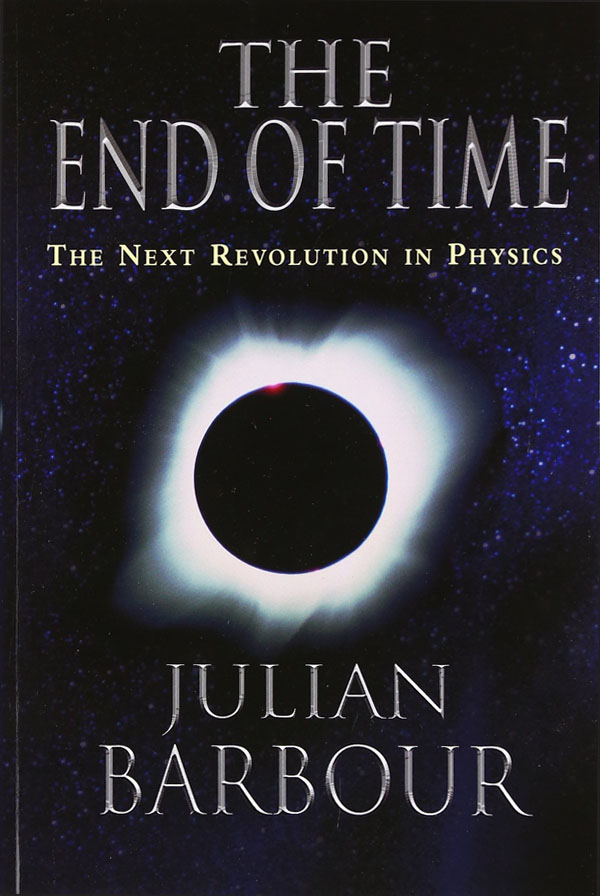
Like Deutsch, the physicist Julian Barbour believes that time is not what it seems to be. There is no flow of time; there are only a myriad of “nows,” some of them containing clues about other nows. Our minds — the most remarkable entities in the cosmos — string some of the nows together, creating the illusion of time’s passage. But despite the provocative title, “The End of Time” is anchored in well-established physics, especially Einstein’s theory of gravity, the general theory of relativity. Indeed, Barbour says his own ideas about space and time are already “hidden” within general relativity — so well hidden, though, that not even the theory’s creator saw them. Einstein, we’re told, “by no means fully grasped the significance of his own theory.” We’re also treated to a compelling exploration of the problem of consciousness, with allusions to art and literature enriching the journey — all of it woven together by a writer who understands modern physics at an astonishingly deep level. — DF
Black Hole Blues: And Other Songs From Outer Space, by Janna Levin (2016)
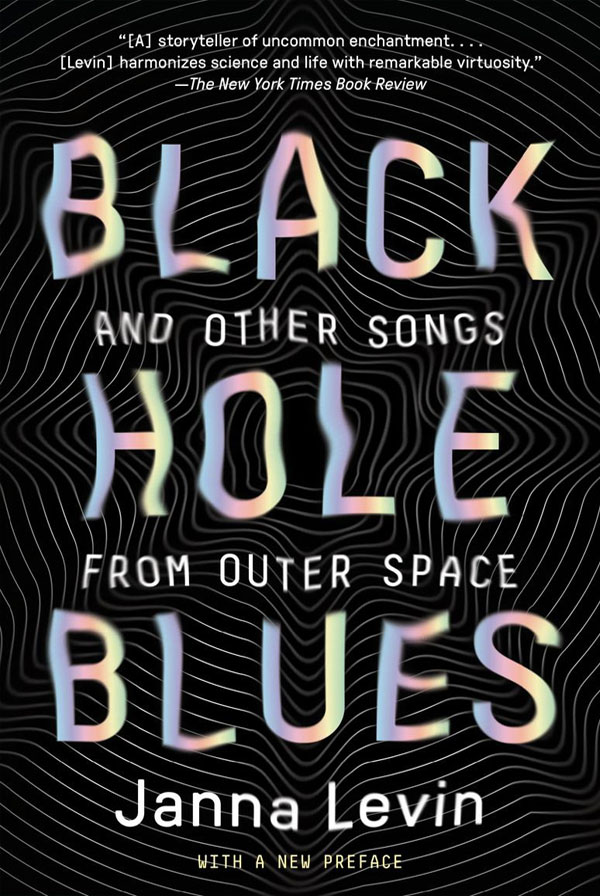
“Black Hole Blues” is a behind-the-scenes, all-access look at the quest to record the sound of ripples in space-time known as gravitational waves. The Laser Interferometer Gravitational-Wave Observatory, or LIGO, took 40 years, a billion dollars, and almost 1,000 scientists to get up and running, and Janna Levin guides us through all the politics, personalities, and physics. She’s as talented a writer as she is a cosmologist, making her books equal parts literature and science. But just as the book was heading to press, in February 2016, LIGO announced that a gravitational wave produced by the crash of two black holes more than a billion years ago passed through the observatory’s outstretched arms in September 2015. Suddenly Levin’s book, which had started as a poetic portrait of the LIGO dreamers, became a documentary of one of the greatest astrophysical achievements of all time. She scrambled to write an epilogue, but there’s something charming about the fact that Levin portrayed science in action without knowing how it would all turn out. — AG
Spooky Action at a Distance: The Phenomenon That Reimagines Space and Time — And What It Means for Black Holes, the Big Bang, and Theories of Everything, by George Musser (2015)
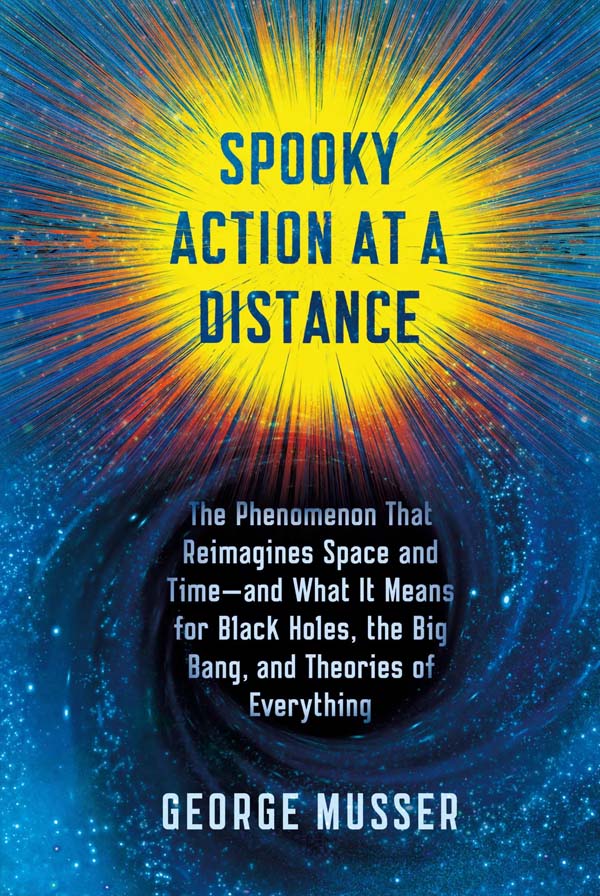
“Blown minds are an occupational hazard in physics,” writes George Musser in “Spooky Action at a Distance.” They are likely a common side effect of reading this book, too. Hawking made his famous discovery of black hole radiation by considering the effects of quantum mechanics on the fabric of space itself. Musser, a science journalist, pursues that same line of thinking up to the present day, delving deeply into cutting-edge theoretical physics. At issue is the notion of entanglement — the quantum mechanical phenomenon whereby two particles, separated by vast stretches of space, remain mysteriously in sync. It was this aspect of quantum physics that Einstein couldn’t stomach, deriding it as “spooky action at a distance.” But spooky action has been experimentally confirmed; the question now is, what does it mean? In this beautifully written book, Musser suggests that perhaps it’s telling us something about the true nature (or true illusion) of space. “If influences can leap across space as though it weren’t really there,” he writes, “the natural conclusion is, space isn’t really there.” — AG
The Physicist and the Philosopher: Einstein, Bergson, and the Debate That Changed Our Understanding of Time, by Jimena Canales (2015)
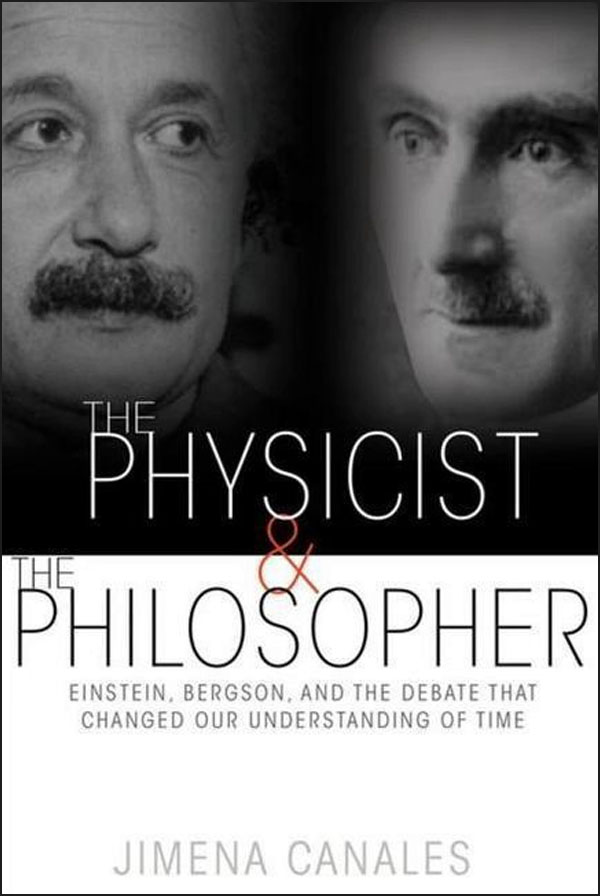
Albert Einstein became a household name in 1919, after his theory of general relativity was confirmed by observations carried out during a solar eclipse. Before that, however, the most famous contemporary thinker to ponder the nature of time was the French philosopher Henri Bergson. Bergson’s view of time was very different from Einstein’s. The two men had a debate, in Paris, in 1922 — just as the world was beginning to come to grips with Einstein’s theory. Canales, a historian of science, shines a spotlight on exactly how their views differed: Einstein accused Bergson of clinging to a “soft,” psychological account of time, one that had no place in the modern scientific view. Bergson, for his part, felt that Einstein’s theory failed to take into account what mattered most: how actual human beings experienced time. In this, he was perhaps correct; toward the end of his life, Einstein lamented that problem of the “now” — the seeming specialness of the present moment, compared to all others — lay beyond the scope of physics. In an age when both physicists and philosophers are arguing about what the relationship between their two disciplines ought to be, Canales’ historical investigation is a useful jumping-off point: here we see the beginning of what would become — by some accounts — a gaping chasm between physics and philosophy. — DF
Why Does the World Exist? An Existential Detective Story, by Jim Holt (2012)
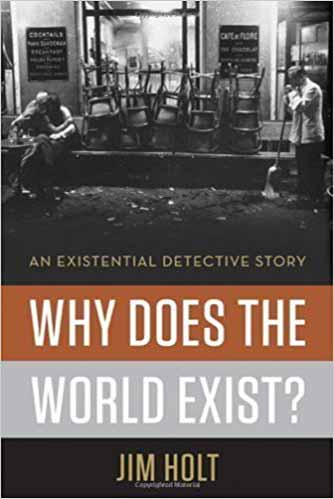
At the end of “A Brief History of Time,” Hawking asks, “Why does the universe go to all the bother of existing?” That’s the question the writer Jim Holt sets out to tackle in this funny, profound, and highly engaging book. Holt chronicles his existential quest as he meets with cosmologists, philosophers, and theologians in his impassioned search for the meaning and mechanism of existence. We get to listen in as Holt speaks with everyone from the physicists Roger Penrose and David Deutsch to the philosopher Adolf Grünbaum and even the novelist John Updike. Free will, God, inflationary cosmology, the anthropic principle, entropy, information — they delve into it all. The first-person narrative plus Holt’s dry humor and literary bent set this book apart from others of its ilk. So pour yourself a mug of hot chocolate, cozy up with this book, and spiral into an existential crisis. You won’t regret it. As for Hawking’s question, perhaps it’s Updike who offers the most compelling answer: “Beats me, actually; but who doesn’t love the universe?” — AG
Dan Falk (@danfalk) is a science journalist based in Toronto. His books include “The Science of Shakespeare” and “In Search of Time.” Amanda Gefter (@amandagefter) is a science writer based in Somerville, Massachusetts, and the author of “Trespassing on Einstein’s Lawn.” Together they host “BookLab” (@booklabpodcast), a podcast that reviews popular science books.











Comments are automatically closed one year after article publication. Archived comments are below.
Our brains make sense of what is around us – well at least sometimes! – but the brain filter has to put things to us so we can act appropriately. If there were no arrow of time, we couldn’t function so our brain feeds us the information as if there were. We connect things from the “past” to what might happen in the “future, because our brain is part of the entropy around us. At some point we would have to say that things are the way they are because if they weren’t we could function as life forms, so of course what we observe is a system which is conducive to life and not the opposite. Or another way round, life develops when the universe works the way it does, but something else might develop , or nothing, if the universe worked another way.
Consider that this thought has been transformed into photons. They are at this very moment entering your brain through the portals of your eyes as you read the squiggles on your illuminated screen.
An idea, literally transformed into light, is transported and diffused it to other minds.
That is phenomenally magical. Absolutely brilliant!
If light can bear ideas and messages, what, then, might be the radiant message of the heavens? Why are we so enthralled with the starry host? Does it all contain a message or is it all just luminous happenstance?
There is no passage of time, it’s always right now, the present. However, there is the passage of change.
Did the “now”, the “present” exist before human beings experienced it?